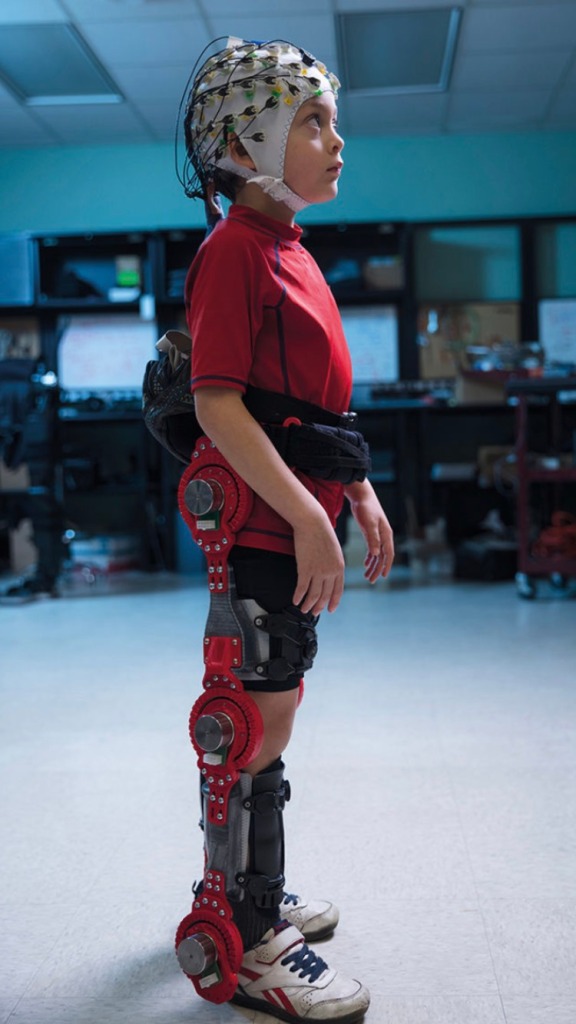
Pediatric brain-machine interfaces (BMI) are used for diagnosis (e.g., covert consciousness detection), control of prosthetic limbs or other external devices, reducing the negative impacts of Attention Deficit/hyperactivity Disorder (ADHD) and Autism Spectrum Disorder (ASD), providing communication mechanisms for those with language/speech disorders and other applications.
BMIs for lower-limb rehabilitation in the adult population continue to develop and produce new advances in neuromuscular rehabilitation. However, the development of similar systems for children has been slow despite the fact that this population has a great deal to gain from these systems. At the University of Houston, we are developing systems to examine children’s ability to use and control motor imagery BMIs for gait rehabilitation.
More research is needed to better understand the neural representation of overground movement in young children, and how this representation changes during childhood. Little is known about how this representation may differ between able-bodied children and those with gait limitations due to neurological injury. This understanding could be harnessed into actionable rehabilitation paradigms for children with gait limitations.